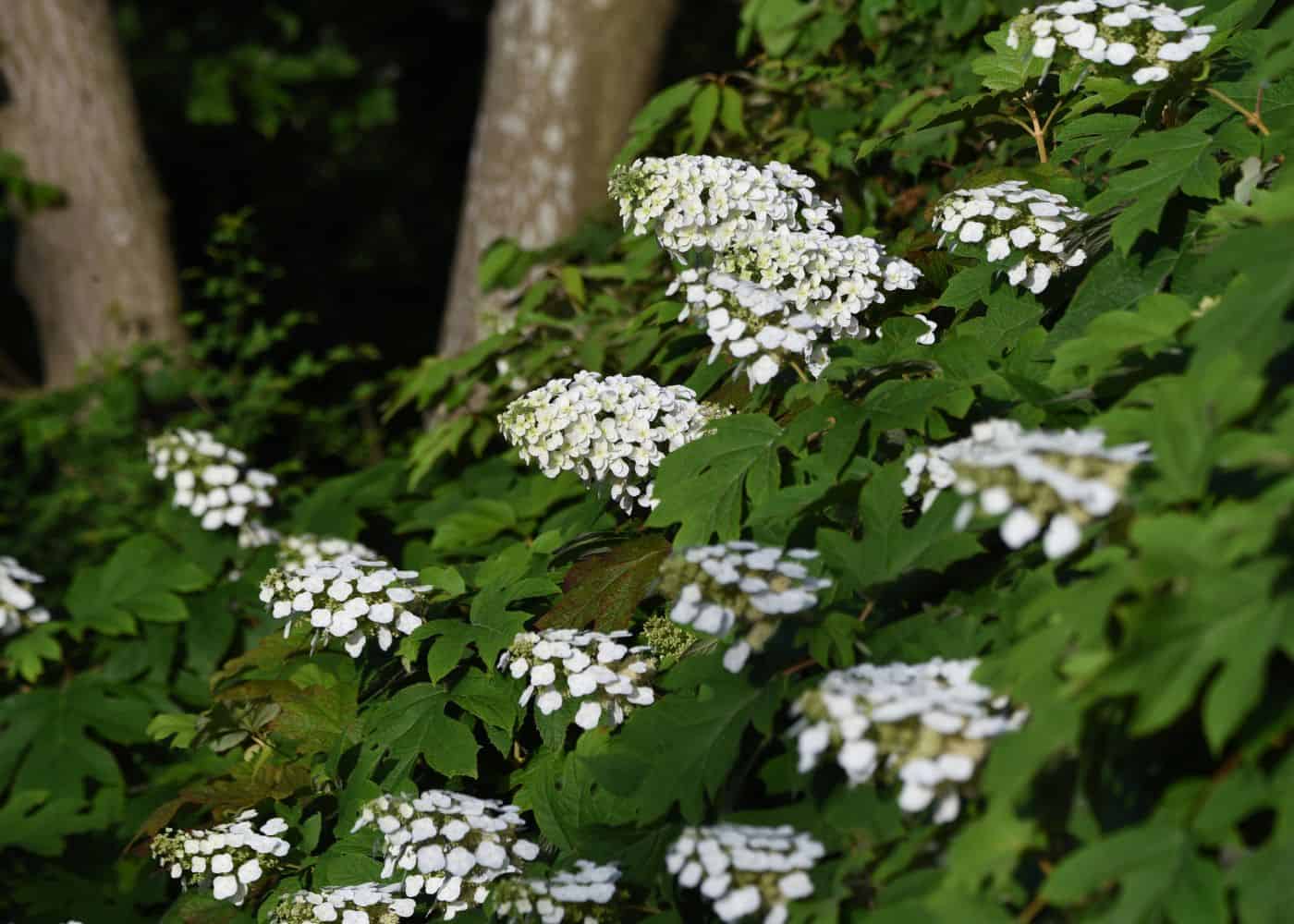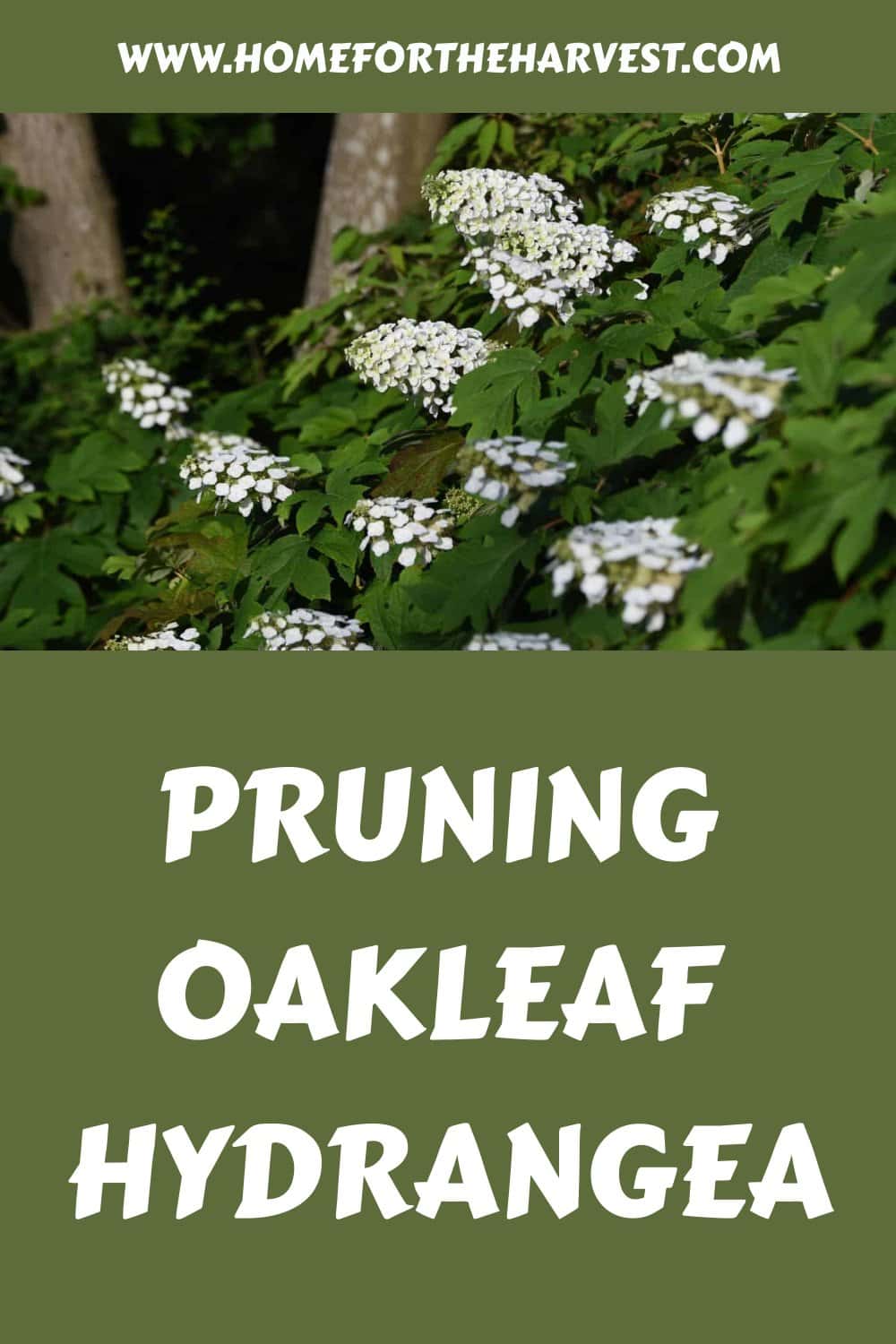Oakleaf hydrangeas are best pruned in the summer, right after the flowers on the shrub have started to fade, as this species blooms on old wood. Start by inspecting the plant and trimming out any branches that are dead, dying, or diseased. Then, thin the canopy by removing any branches, rubbing other branches or growing inwards towards the middle of the plant.
If the branch framework still feels crowded, remove a few more of the oldest branches entirely, leaving the most healthy branches intact. You can then trim back the outer shape of the entire shrub but don’t take off more than about 1/3 of its size.
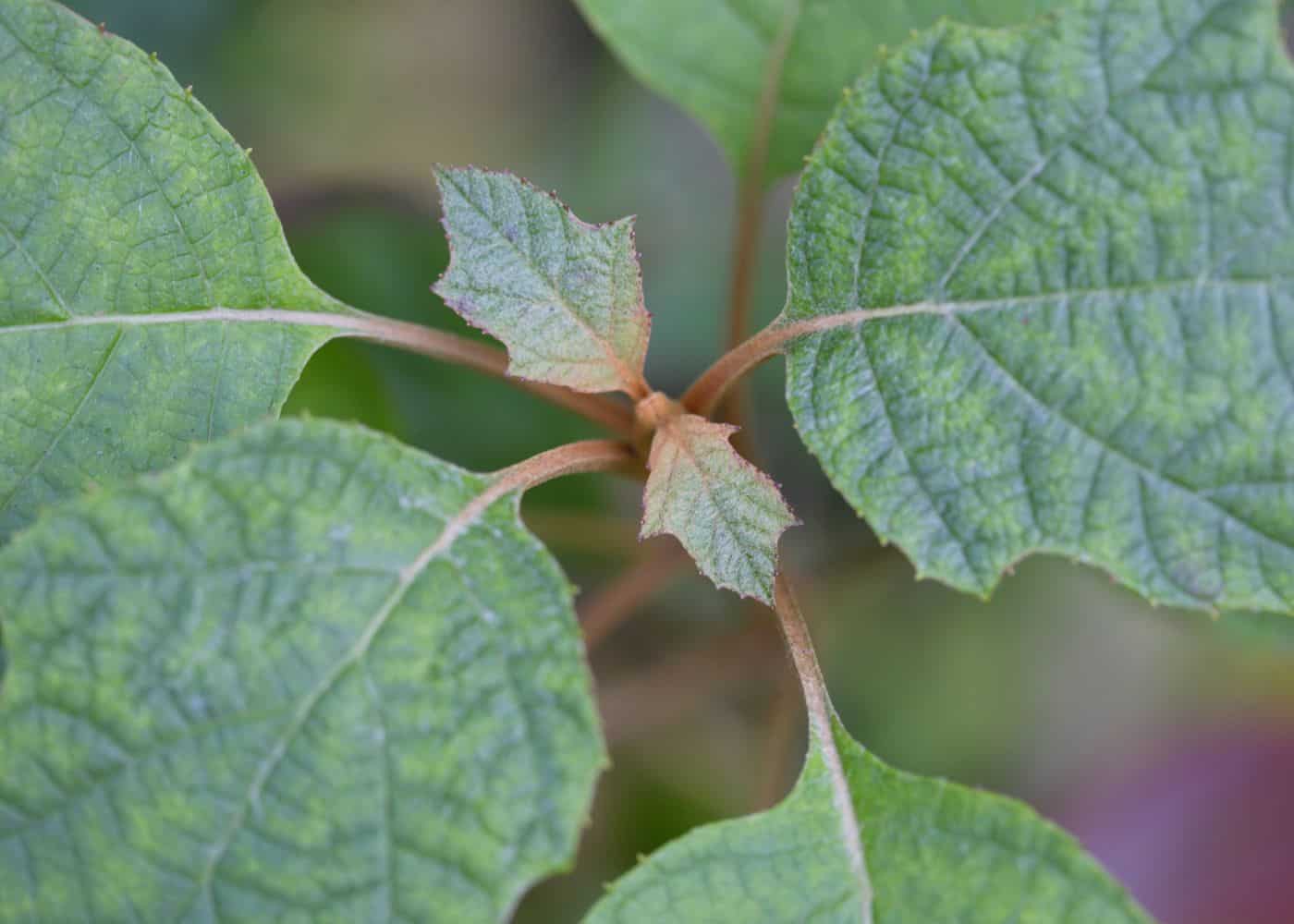
Pruning oakleaf hydrangea plants
Pruning oakleaf hydrangeas (Hydrangea quercifolia) can be a great way to keep your plants healthy and looking their best. Pruning has many benefits, including promoting better air circulation, increasing flowering potential, and controlling the size of the plant. Pruning should be done in summer for optimal results.
When to prune oakleaf hydrangeas
The best time to prune an oakleaf hydrangea (Hydrangea quercifolia) is in late summer after it has finished blooming for that season but before any new buds have formed on its branches. Oakleaf pruning happens around the same time of year as the pruning of bigleaf hydrangea plants.
Oakleaf hydrangea blooms on “old wood,” meaning that the plant grows next year’s flower buds each summer before winter starts. These dormant flower buds stay on the stems through the winter and are ready to bloom soon after the plant greens in spring. Pruning in summer can ensure you don’t accidentally remove any flower buds when trimming branches or stems.
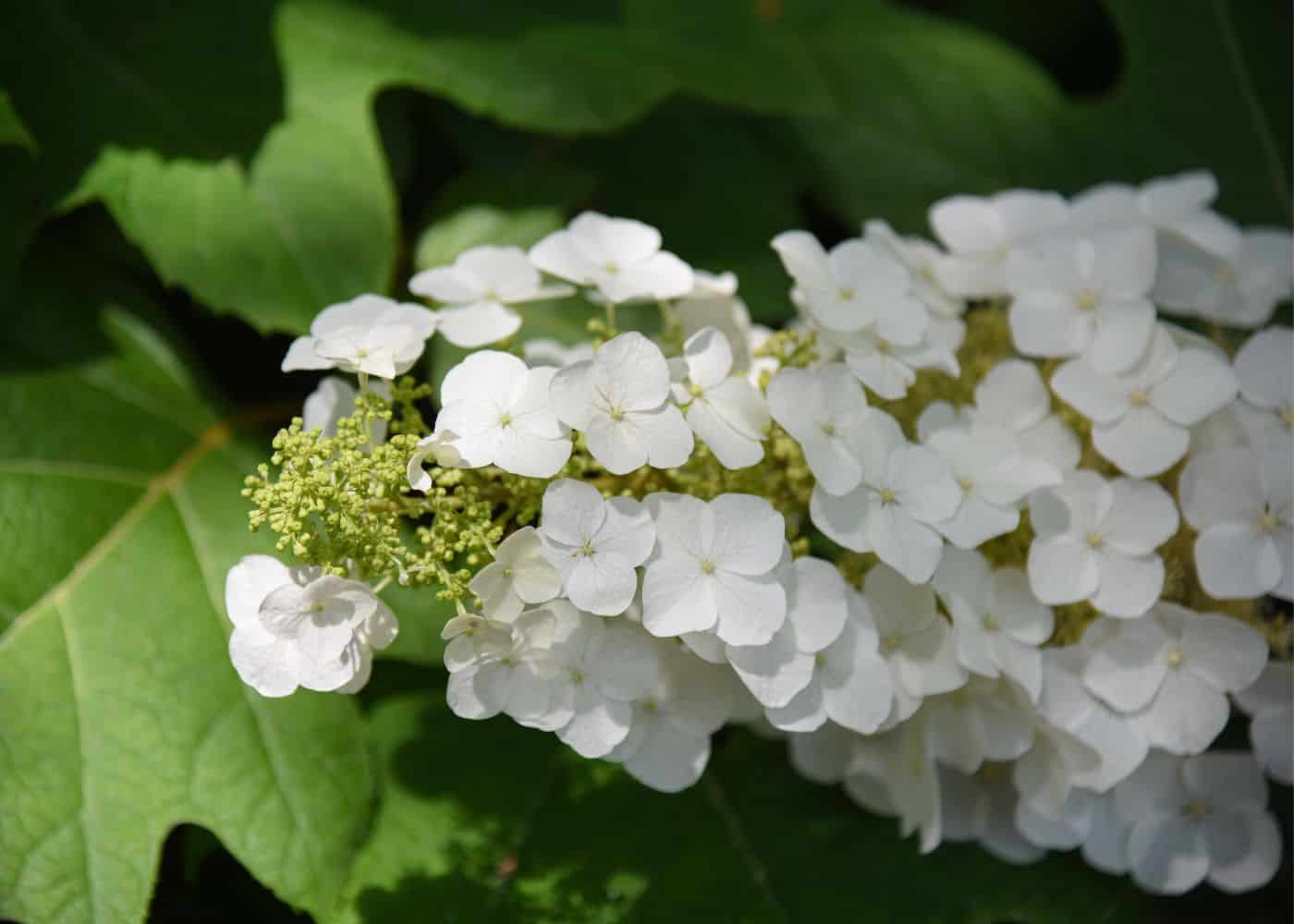
Pruning tools
Shears or clippers are a must-have tool when it comes to pruning, as they can easily cut through small branches and stems. They come in different sizes and shapes, so make sure you choose one that fits comfortably in your hand. Make sure your pruners are free from grime and have been sterilized (carrying around a jar of multi-purpose Lysol disinfectant liquid works well).
Loppers are also great for cutting larger branches up to two inches thick. They have long handles, which give you more leverage when cutting thicker branches.
Pole pruners are ideal for reaching higher branches without climbing a ladder or using a step stool for established shrubs and larger varieties. These usually come with an extendable pole and sharp blades at the end, allowing you to reach high places safely while still getting a good grip on the branch you’re trying to cut off.
Finally, gloves and safety gear should always be worn when pruning any type of plant – even if it’s just a small shrub! Gloves will protect your hands from cuts, scrapes, splinters, and thorns, while safety glasses will help protect your eyes from flying debris caused by wind or other environmental factors during the summertime pruning season.
Steps for pruning an oakleaf hydrangea
Here are the steps you should take for proper pruning of an oakleaf hydrangea:
1. Inspecting the plant
Before beginning to prune, closely examine your oakleaf hydrangea and inspect it carefully for signs of damage, such as broken stems, wilting leaves, discoloration, etc., which could indicate disease. If you find any of these signs, then it’s best to contact an expert before proceeding with pruning. Get lots of pictures of the infected portions plus photos of healthy portions for comparison (or take samples to bring to a local expert).
2. Removing dead, damaged, or diseased branches
Once you have inspected your plant and identified any dead, damaged, or diseased branches that need to be removed, then use sharp shears/clippers/loppers (depending on branch size) to remove them from the base of the stem near where they join other healthy parts of the shrub – don’t leave stubs behind!
3. Identifying crossing or inward-growing branches
Look closely at how each branch is growing in relation to its neighbors – if two are crossing over one another, then this can lead to problems down the line, so trimming back one to its base may help prevent future issues. Similarly, if a branch grows inward towards the center of the shrub rather than outward away from it then this should also be trimmed back slightly so that growth remains balanced overall.
4. Discretionary pruning
Once all dead, damaged, or diseased branches have been removed and crossing or inward-growing ones identified, you can begin the more discretionary portion of the pruning process. However, not every branch needs trimming; only those that are necessary should be pruned to keep the shape looking neat while still allowing enough foliage to remain intact so that there are plenty of energy-producing leaves to grow the buds needed for flowering next season.
Thinning crowded areas is one important part of discretionary pruning. Try to remove whole branches that are overly busy rather than leaving stubs. When deciding which of two branches to remove, it generally makes sense to cut out the oldest one (as long as the younger one is healthy and growing in an adequate direction).
5. Shaping by trimming long branches back
Work on the shrub’s overall outer shape by shortening some of the longest branches. Start with the longest branches first. Cut back these branches by up to one-third of their length, ensuring that each cut is clean and angled away from the center of the plant. This will help promote new growth and encourage bushier plants in the future.
6. Cleaning up after pruning
Once all desired pruning has been completed, it is important to clear away any debris that has accumulated during this process, such as twigs or fallen leaves. Otherwise, these can attract pests, damaging your oakleaf hydrangea further down the line. To do this, simply use a broom or rake to sweep them into a pile before disposing of them properly according to local regulations; composting works well here too.
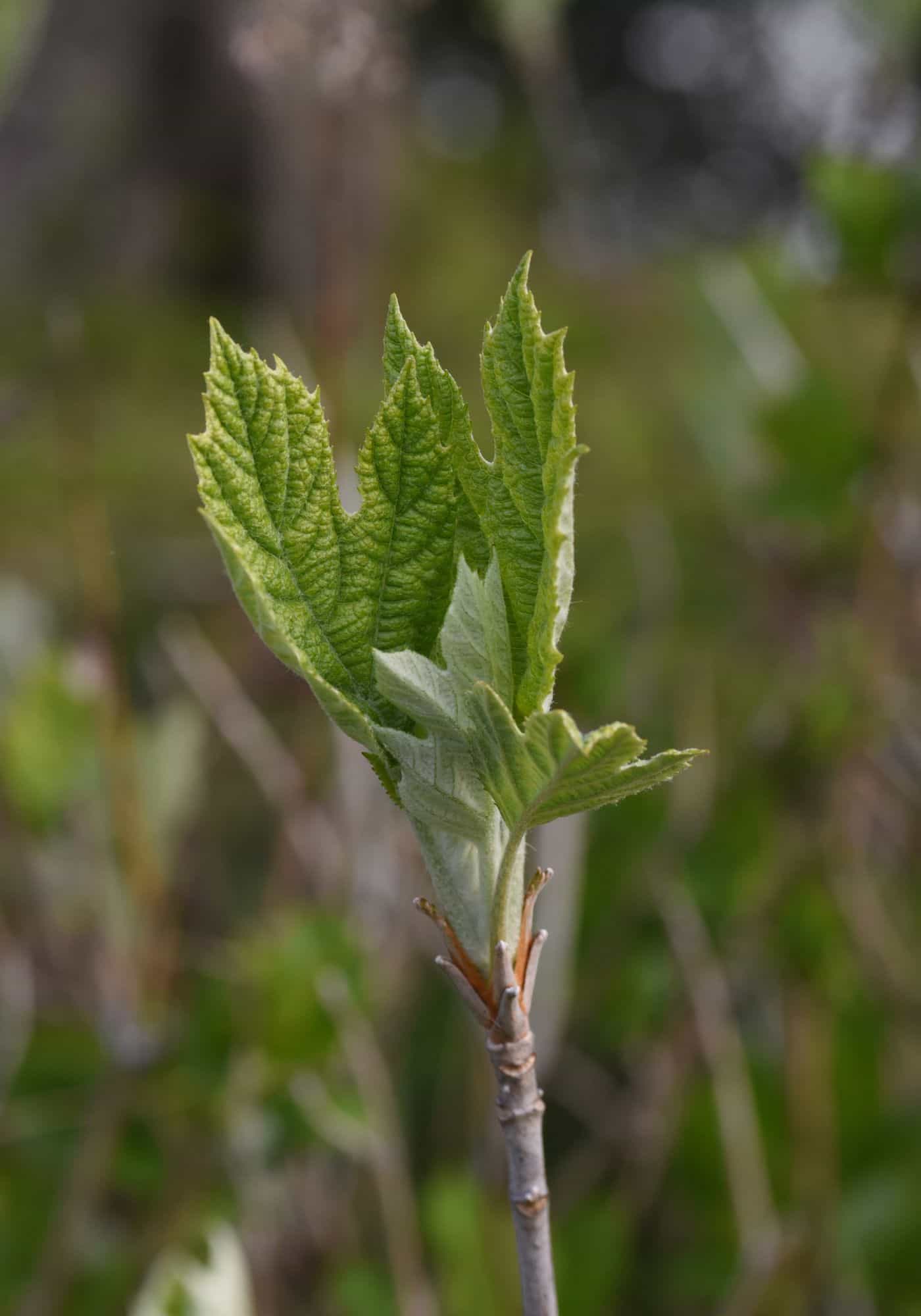
Aftercare tips for your oakleaf hydrangea
While pruning is the major annual maintenance for this shrub, its good to remember to keep up with other regular tasks like watering, feeding, mulching, and checking the plant for pests and disease.
Watering and fertilizing regularly
After pruning your oakleaf hydrangea, it’s important to water and fertilize the plant regularly. This will help ensure that it has enough nutrients to grow healthy new branches. For established shrubs, water deeply once a week in the summer months (or even twice during heat waves), ensuring the soil around the base of the plant is saturated. You can also use a slow-release fertilizer in the spring and again right after the plant flowers.
Mulching around the base of the plant
Mulch is an excellent way to protect your oakleaf hydrangea from extreme temperature swings, weeds, and many pests. Spread a 2-3 inch layer of organic mulch around the base of your plant for optimal protection during hot or cold weather conditions. Composted yard trimmings work well and provide a slow-release source of essential plant nutrients.
Make sure not to pile up too much mulch against the base of the shrub, as this can cause rot or other issues with its health over time. Leave a 6″ gap from the base of the plant to where the mulch starts.
Checking for general health, pests, and disease
Inspecting your oakleaf hydrangea regularly for signs of infestation, such as wilting leaves or discoloration on stems or leaves, is essential for its continued health after pruning. If any signs of pest activity, like aphids or spider mites, are found, it’s usually much easier to treat them before they spread further throughout the garden.
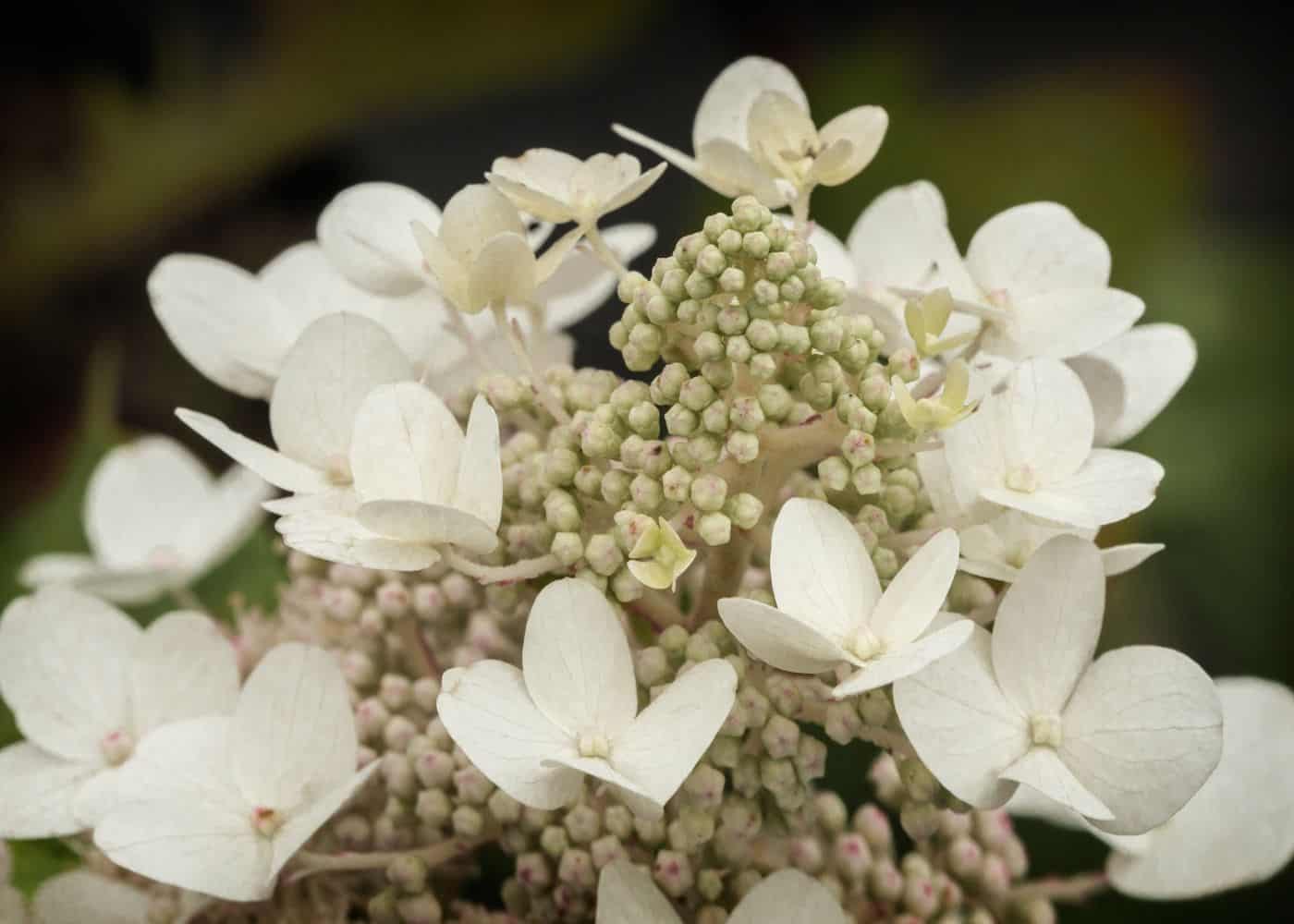
FAQs about pruning oakleaf hydrangea shrubs
When should oakleaf hydrangeas be pruned?
Oakleaf hydrangeas should be pruned in the summer. The best time to prune them is after the flowers have started to fade, but before the plant has had a chance to put a lot of energy into growing the flower buds that will bloom the following year.
Pruning at this time will help to shape the shrub and encourage more blooms for the upcoming season. It is important to avoid pruning after mid-summer as it can reduce flowering for the next year. While certain types of hydrangea should be pruned in early spring, oakleaf is not one of them. Oakleaf hydrangeas should not be pruned in the spring.
How far back can you prune an oakleaf hydrangea?
Oakleaf hydrangeas can be pruned back by about 1/3 of the shrub’s overall size. This is best done in the summer to avoid ruining the next year’s spring blooms. This will encourage new growth and help keep the shrub healthy.
When pruning, remove dead or damaged branches first, then selectively thin out any overcrowded areas of the plant. Finally, trim back overgrown stems to a desired size and shape. Pruning oakleaf hydrangeas can help to keep them looking their best and ensure an abundance of blooms each year.
How do you fix leggy oakleaf hydrangeas?
Oakleaf hydrangeas are prone to legginess due to their fast growth rate. To fix this, prune it every summer.
Cut out dead, damaged, and diseased branches first. Then remove crossing/rubbing and inward-growing branches. Then cut the longest stems back by about one-third of their length and remove any dead wood or weak branches.
Pruning encourages more compact growth and helps create a fuller shrub with more blooms. After pruning, fertilize your oakleaf hydrangea with an all-purpose fertilizer formulated for woody plants (shrubs and trees). Water regularly throughout the growing season for best results.
How do you reduce the size of an oakleaf hydrangea?
To reduce the size of oakleaf hydrangea, prune it each summer. In addition to the pruning steps listed above, remove 1/3 of the oldest branches each year. Take them right back to the base of the plant (remove them entirely). Do this for three years until all the long branches are gone.
In the meantime, keep the new branches shorter as you do your annual pruning. As before, remove any dead, diseased, or damaged branches and thin out overcrowded areas. Make sure to leave enough leaves on the plant for photosynthesis and healthy growth. Finally, fertilize with a balanced fertilizer after pruning to encourage vigorous regrowth and flowering throughout the season.


